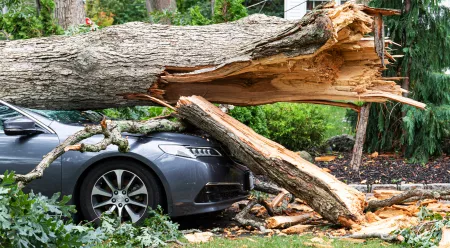Owning an old house is a dream for many people. From the quirky layouts, palatial floor plans, charming details not forgetting the lovely locations, old houses offer an amazing space to create memories. Many old houses have been standing for close to 50 years. As such, these houses may need regular renovations. While it is wise to have an insurance plan for your old house, you might notice significant differences as compared to insuring a new house.
START A QUOTE
What’s the difference between old and new home insurance plans?
Let’s get real. Old homes are more prone to replacements and repairs. As such, insuring an old house will be expensive as compared to a new house. Also, given the models the old houses were built under, they often require specialized craftsmen and materials, some of which are difficult to find. And with most old homeowners not willing to compromise on the structure of the house, the repair cost can be significantly higher.
Most older homes were constructed with materials that are less resistant to adverse weather conditions and fire. As such, these houses are more prone to accidents, hence adding to the cost of insurance. You will find that premiums for an old house will be much higher than those for a modern or new house.
You may pay even higher premiums if:
Your home has an outdated electrical wiring system- Outdated electrical wiring can make your home more susceptible to dangers such as fires, making the insurance premiums higher.
-
Rare materials- This is the main factor to consider when looking for an insurance plan for your old home. If the home is constructed with rare material, you may pay more premiums since these can be hard to find.
-
Storm-sensitive roofs- If your roof is more prone to damage due to hail, wind or other weather-related factors, you will be charged more premiums.
-
Outdated plumbing- Most old homes have outdated plumbing systems. Since these are more prone to rust hence inhibiting water flow, you are likely to pay more premiums to cater to the constant repairs.
Are the higher premiums worth it?
Regardless of the age of your house, do not ignore the importance of homeowners insurance. The insurance policy will come in handy when that roof caves in, in the event of a fire or even vandalism. Paying for some of these accidents may end up being more expensive as compared to having a homeowners insurance policy. Your premiums will only be determined after a home inspection. This will help the insurance provider estimate the replacement cost of the house.
Looking to get an insurance policy for your old house? Here are some things you should ensure are covered.
-
Personal property coverage- Most old homes hold a lot of expensive valuables such as art, instruments, jewellery and even electronics. To safeguard your property, consider getting scheduled personal property coverage.
-
Guaranteed replacement cost coverage- This covers the full cost of replacing the home, regardless of the policy’s limit is extended. This policy can give you peace of mind as you will be assured of coverage in the event the full house is destroyed.
-
Roof replacement coverage- Most old houses are susceptible to roof damages given old age. Roof replacement coverage caters to the cost of replacing the roof provided it is caused by a covered cause.
-
Service line and water coverages- If your service line is faulty, it might be difficult to replace sewer pipes, home networking wiring and even gas pipes. While this can be costly to repair, having the service line covered ensures you are not caught off guard with unplanned maintenance and repairs.
Tips on how to save money on insurance for older homes
1. Shop around and compare various quotes
Insurance companies offer different coverages at different prices. For an old house insurance coverage, compare the rates of each peril covered as opposed to the full coverage. This gives you the option of choosing the perils coverage that applies to your home. Also, choose a coverage that will give you value for your money as opposed to cheap coverage.
2. Have a higher deductible
The higher the deductible amount, the lower the rates. While having a higher deductible reduces the premiums you should remit, ensure that you can afford the out-of-pocket costs you opt for.
3. Stay ahead of repairs
Maintenance checks should be routine for old homes. By regularly maintaining your home and undertaking necessary simple repairs, you avoid surprise damages. Check out for signs of damage to ceilings, walls, and even leaks. To avoid blockages, clear gutters regularly, especially if you live in a place with lots of plantations. The leaves from trees can block the gutters and the drainage systems necessitated major repairs in the future. Also, check and maintain your HVAC system regularly. When the need for small repairs arises, carry them out as opposed to waiting for the problem to become even more.
4. Update your replacement cost estimate regularly
When you make improvements in your home, ensure you update them with your insurance provider. For instance, you may opt to replace your roof or install new windows. This increases the value of your old home. It also increases the cost of replacements. Updating the replacement estimate ensures you do not get short-changed when you need the insurance to step in. It might be useful also to check this post about home insurance cancelation.
5.Insurance bundling
If you purchase more than one insurance policy from the same insurance provider, it will save you money as compared to purchasing policies from different companies. For instance, if you need auto insurance and home insurance for your old house, consider getting the two from the same company. This should save you a significant amount. However, ensure that you purchase the policies from a reputable company. You also get to track and update your policies with one provider which is easier not forgetting easier record keeping.
Insuring your old home is vital. However, you can improve your home safety by:
-
Installing a home sprinkler system and a monitored fire alarm- Most old houses are not fitted with these.
-
Replacing old-style wiring with the modern style- This reduces the chances of home fires.
-
Upgrade the HVAC system
-
Upgrade the plumbing to PVC or copper



